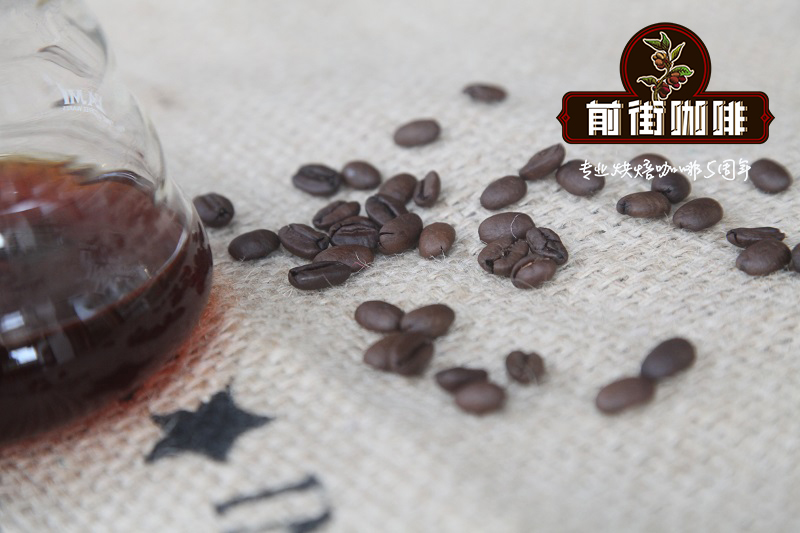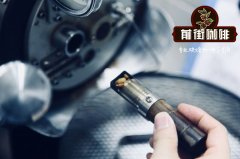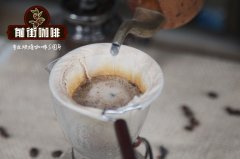Common varieties of coffee, what are Arabica, Robbosa beans?

Professional coffee knowledge exchange more coffee bean information please follow the coffee workshop (Wechat official account cafe_style)
Common varieties of coffee, what are Arabica, Robbosa beans?
Any of various evergreen plants of the genus Coffee in Rubiaceae.
The flowers are white and fragrant.
Coffee beans are actually the seeds of coffee.
Sun-dried pulp and peel can be used to make tea, called Cascara Tea, coffee honey fruit tea
The green beans before baking are called "Green Beans".
Because the ripe fruit of most varieties is red, it is commonly known as "coffee cherry (Coffee Cherries)"
Some will produce yellow or orange coffee fruit, and there is a tree with red and yellow varieties.
Depending on the environment and variety, it can be short shrubs, or some grow to 8 meters
Suitable for growing between 30 degrees south latitude and 25 degrees north latitude, especially called "The Bean Belt"
Taiwan has a record of growing coffee in the 19th century, appearing in Hsichih, cold puddles and other places.
Oh, everyone's favorite Arabica.
Coffee can be divided into three main varieties, namely, Arabica (Coffea arabica), Robusta Coffea canephora (Robusta) and Liberia (Coffea liberica).
Arabica is the main force of boutique coffee, suitable for growing at higher elevations, tastes better, is also more delicate, needs care, and is the smallest of the three, so it is also known as small fruit coffee.
Robusta, also known as medium fruit coffee, can grow at a lower altitude, high yield, plain flavor, usually used for commercial purposes, only a very small number of Robusta have the level of boutique. The fruit of Leibiria is super large, which is translated into Chinese as big fruit coffee. It has the ability to resist leaf embroidery disease, which is rare on the market at present.
Varieties and cultivated species
It is speculated that there are thousands to tens of thousands of naturally occurring varieties (Variety) in Arabica, mainly in Ethiopia; at the same time, there are also many artificially screened and cultivated species (Cultivar), which can be thought of as the many branches under Arabica, the former naturally produced and the latter artificially cultivated for a long time.
Native species Heirloom
Generally speaking, farmers may grow more than one variety at the same time, or they may pick out the better varieties for sale. What is more special is Ethiopia. In this country, coffee is mostly wild or semi-wild, growing in fields, backyards, or under forests. What farmers receive is actually a large platter of many different natural varieties, so Yi coffee beans are usually marked as "original species, ancestral species (Heirloom)."
Wild coffee trees like to grow at the bottom of the forest. The tree species that can shade coffee is called "Shade Tree, or Shadow Tree"; such a planting method is called "Shade-grown Coffee". The advantage is that it can reduce the impact on the ecology, and a variety of organisms will also help to suppress diseases and insect pests. In some areas, bananas and other local food crops are used to shade coffee.
Recommendations related to Ethiopia
Sidamo Gucci Solar IMPCT Commonweal Joint
Shallow baking, fruit and berry aromas, sweet and sour around the nose, all the proceeds are donated to the preschool education fund for IMPCT social undertakings.
Yega Xuefei Herselaci Cochel light baked in the sun, lemon, citrus, scented tea, roasted sweet potato, a classic product that must be drunk in this life
Cedamo Cabedo sun
Fruity, chocolate, deep-baked version of Ethiopian sun
Common diseases and insect pests
It takes about four or five years for coffee trees to plant seedlings and begin to have a steady harvest. Many Arabica varieties with good flavor do not have strong disease resistance. Therefore, coffee is actually a crop that is not easy to take care of. Common diseases and insect pests are:
Coffee bark beetle (Coffee Berry Borer), which lays eggs in the fruit, is difficult to control.
Leaf rust (Leaf Rust), which has sharply reduced production in Central and South America in recent years, is a serious challenge for serious leaf rust that needs to be cut down and replanted.
Coffee Berry Disease, which currently appears in Africa, will directly blacken and spoil the fruit
Arabica variety differences, the degree of impact on flavor, some people will take a reserved attitude, because there is no extensive related research. Variety is not the only factor that affects the flavor, such as the local soil of the place of origin, the depth of the baking degree, the size of the grinding particles, the method of cooking, and so on. However, there are some varieties that are recognized to have better performance. At the beginning, we introduce several common Arabica:
Tibica Typica
Most of the Arabica used for commercial cultivation today can be traced back to Tibica. Characterized by young leaves as dark green as bronze, Tibika is generally considered to have a good flavor, but its unit yield is very low.
In the 17th century, the Netherlands brought coffee trees back to Europe from the leaves and began to grow them commercially in Asian colonies, breaking the coffee trade market monopolized by Arabs. Some of the coffee trees were given as a gift to French Emperor Louis XIV and locked in the heavily guarded Royal Botanical Garden.
In 1723, a brave French captain, Gabriel de Clieu, broke through many hurdles and successfully took one of them to a small island in the Caribbean and planted it, and because Arabica could self-pollinate, it was able to produce offspring and gradually spread to other places. This magical mother tree is called "The Noble Tree" in history, and its offspring is the so-called Tibika.
Rose summer Gesha
The most famous "Gesha, or Geisha" in recent years is originally from Mount Rosa in Ethiopia and is translated as coffee for summer or geisha. After being introduced into Panama, it was once forgotten and rediscovered after 2000 years ago. It has an amazing flavor, and the fragrance of flowers is intertwined with a variety of sweet and sour fruit flavors. It is a brilliant legend at the end of the century.
Bourbon Burbon
The French island of Reunion was called Bourbon before 1789. At the beginning of the 18th century, the French cut branches and propagated Tibica here, and finally produced bourbon through continuous breeding, which is another important mother source of Arabica and an old variety that many people like. The characteristic is that if you grow up in different places, there will be obvious differences in flavor.
Kaddura Caturra
The natural mutant of bourbon originated in Brazil. Because of its many lateral branches and dense fruit, it has high yield, low plant and good flavor, so it is a variety favored by both farmers and consumers.
Katuai Catuai
Cultivated species cultivated in Brazil in the 1950s. "Catuai" means "very good" in the local aboriginal language. The plant is short but strong, able to withstand drought, heavy rain and strong winds, and has a high yield, mainly found in Central and South America. Bourbon, Kaddura and Katuai are available in both yellow and red versions.
SL-28 & SL-34
In the 1930s, Scott Labs was commissioned by the Kenyan government to select varieties suitable for the country. After numbering and screening one by one, SL-28 and SL-34 were finally obtained. Both of them originated from bourbon, and SL-34 can grow in areas with lower elevations.
It later proved that the former received a high rating, usually with blackcurrant-like acidity and complicated flavor, while the latter was slightly inferior, but also had a bright fruit flavor. These two varieties, which currently account for 90% of Kenya's production, are generally recognized as representatives of Kenyan coffee.
Elephant bean Maragogype
It was first found in northern Brazil that plants, leaves, and even coffee beans are larger than the average Arabica. The fruit is large and the relative yield is less. It is also called "The Elephant Bean" in English.
Recommendations related to special varieties
Honey treatment of Storm Manor in Nicaragua
Shallow baked grapefruit, roasted drupe, ginseng, chocolate, like beans
Kenyachi Chaffany AA washing
Floral, blueberry and plum finish, SL28 & SL32 is full of typical Kenyan charm.
Ruyilu National Day holiday Ruiru 11
The hybrid, bred by the Kenyan Department of Agriculture, has a name that looks like an artificial man. Combining the characteristics of many different parents, across Arabica and Robusta, Ruilu 11 is resistant to leaf rust and Coffee Berry Disease, but it is less popular because it is influenced by Robusta.
Important Notice :
前街咖啡 FrontStreet Coffee has moved to new addredd:
FrontStreet Coffee Address: 315,Donghua East Road,GuangZhou
Tel:020 38364473
- Prev

Know the roasting degree of coffee. What is the roasting curve of coffee?
Professional coffee knowledge exchange more coffee bean information please follow the coffee workshop (Wechat official account cafe_style) coffee roasting degree to know, what is the coffee roasting curve? Baking is a process of heating beans. Unbaked raw beans smell only a little grassy and slightly fruity, but taste almost meaningless. Baking triggers beans by heating.
- Next

Is coffee really bitter? Drinking coffee with a stupid look on your face?
Professional coffee knowledge exchange more coffee bean information please follow the coffee workshop (Wechat official account cafe_style) Coffee is really bitter? Drinking coffee with a stupid look on your face? Coffee beans are like fruit, as a matter of fact. The wonderful thing about it is that good coffee can show the taste of many fruits and even all kinds of good food at the same time. In order to describe the complicated flavor of coffee, I
Related
- Beginners will see the "Coffee pull flower" guide!
- What is the difference between ice blog purified milk and ordinary milk coffee?
- Why is the Philippines the largest producer of crops in Liberia?
- For coffee extraction, should the fine powder be retained?
- How does extracted espresso fill pressed powder? How much strength does it take to press the powder?
- How to make jasmine cold extract coffee? Is the jasmine + latte good?
- Will this little toy really make the coffee taste better? How does Lily Drip affect coffee extraction?
- Will the action of slapping the filter cup also affect coffee extraction?
- What's the difference between powder-to-water ratio and powder-to-liquid ratio?
- What is the Ethiopian local species? What does it have to do with Heirloom native species?

